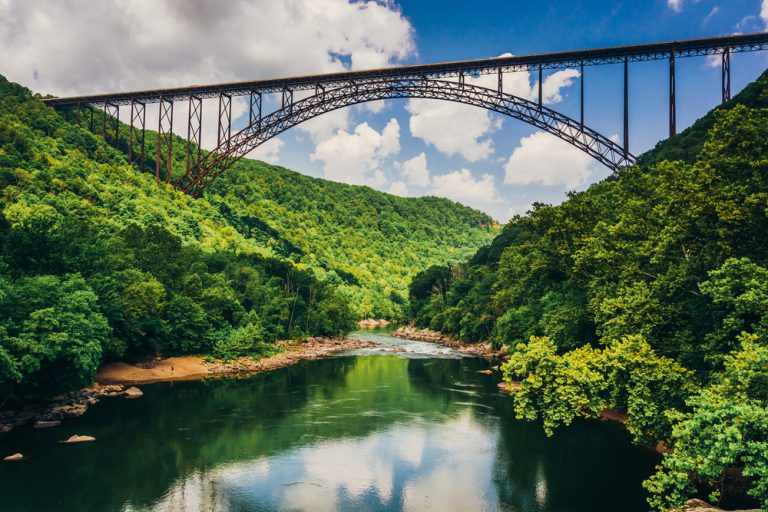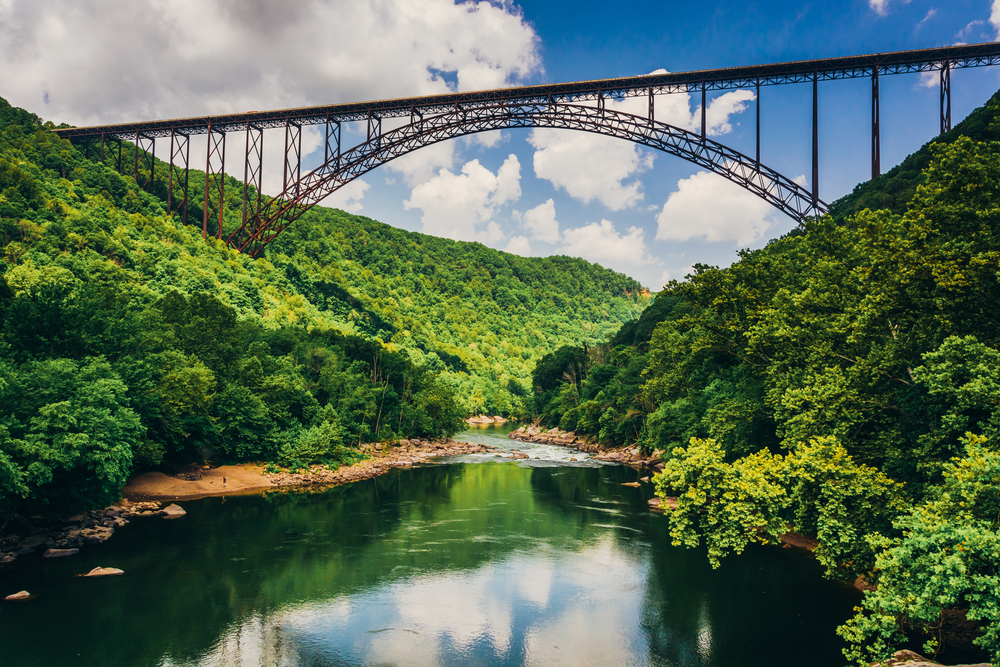
Covering some 70,000 acres of the most beautiful portions of West Virginia, New River Gorge National Park is, despite its name and relatively new designation, an ancient landscape — one whose roaring river, craggy hillsides, and enchanted-feeling forests have drawn human visitors since time immemorial.
Today, that draw looks like an annual visitorship of some 1 or more million people, who come to kayak, canoe, hike, bike, fish, hunt, backpack and camp in the outstretched arms of this glorious countryside. But historically, human interaction with and experience of this land looked much different. What is today called New River Gorge National Park is the ancestral, traditional land of the Eastern Band of Cherokee, Tutelo, S’atsoyaha, and Moneton people. These Indigenous tribes stewarded, cared for, and lived off the land long before westerners ever set foot upon it.
What follows is only a small portion of their stories.
The Indigenous History of New River Gorge National Park

The Eastern Band of Cherokee Indians remains one of the largest, strongest, and most well-known tribes in the modern United States. At the time New River Gorge was being colonized and settled, these people were living throughout this part of West Virginia, as well as a large swath of the rest of the southeast; historically, Cherokee people populated western Virginia as well as North and South Carolina, Tennessee and the northernmost part of Alabama.
The Cherokee were driven from their homelands by white settlers under the Indian Removal Act in 1830, and many died en route to the reservations set up for them west of the Mississippi and far from the lands that had been their home for centuries. Today, the Eastern Band of Cherokee Indians is headquartered in western North Carolina and stands some 16,000 members strong.
The Tutelo people were a Native American tribe populating Virginia and West Virginia as well as the Big Sandy River on the West Virginia-Kentucky border. However, upon the arrival of westerners in the mid-1700s, the Tutelo people were forced to migrate northward. They were eventually adopted by the Cayuga tribe of New York in 1753.
The S’atsoyaha people, also known as the Yuchi, have lived in the eastern Tennessee River valley in Tennessee since at least the 1600s. Toward the end of that century, they moved toward Alabama, Georgia, and South Carolina, as well as the panhandle of Florida. In the 18th century, epidemic diseases and warfare decimated their ranks, and they, too, were forcibly removed to reservation lands west of the Mississippi in the 1830s. Today, there are about 700 Yuchi enrolled members based in northeastern Oklahoma.
The Moneton people historically lived in West Virginia, primarily in the Kanawha Valley, near the Kanawha and New Rivers. Evidence of this tribe is found both in colonial writings and archeological evidence, though the tribe seems to have gone extinct in the late 17th century.
The descendants of these tribes still live in the lands surrounding the National Park today and continue to enact the ancient traditions and customs that have fortified and sustained them for centuries, even in the face of displacement, illness, and violence.
Paying Respect to the Land
Learning more about the First Peoples who inhabited a given landscape before you got there is one of the first and most essential ways to pay respect not only to those people, but to the land itself. After all, it’s only through their good stewardship that these lands survive today to be experienced and appreciated at all.
Reading write-ups like these is a great start, and oftentimes, the National Park Service — or whichever other bureau oversees the landscape you’re visiting — offers interpretive signage, exhibits, and events that explain and bring to life the Native American stories undergirding the location’s spirit. However, no matter where you are in the U.S. (and beyond), there’s always more to know. The free online service Native Land is a great place to start if you’re not sure whose ancestral grounds you happen to be stomping on, and links directly to the contemporary tribes so you can learn more.
Still, this kind of self-education is only the beginning. To truly pay respect to the land, we must also be committed to carrying out the stewardship that has kept these places thriving for so long before our arrival, so as to preserve them for our children, their children, and so on.
Some of that stewardship is mere common sense: don’t litter, don’t wander off-trail into dense but fragile foliage, and don’t interact with wildlife up close. But for those hoping to codify their minimal impacts on the land, Leave No Trace is a great organization to check out; its seven principles make it easy to ensure you’re traveling as lightly as possible and keeping the places you go green for your return trip, as well as the return trips of people who haven’t even been born yet.
As you find yourself adventuring through the New River Gorge — or wherever else your travels bring you — we hope this Indigenous historical context adds a layer of nuance and appreciation to the experience, as well as the motivation to take the mantle of stewardship into your own hands. Enjoy your trip — and many happy returns, for all of humankind.

